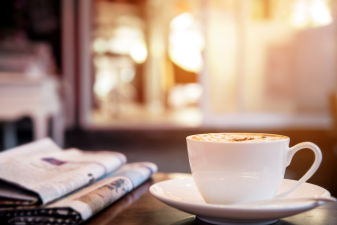Tea: Ancient Beverage and More Popular Than Ever in 2016 7/18/2016
The Roots of the Ancient Beverage
Legend places the origin of tea drinking in China: 2737 BC. According to the legend, Shen Nung, emperor, scholar, and herbalist, accidentally created culinary history when he was boiling water under a tea tree and some leaves fell into his pot! Since this time long ago and even until this day, tea is the most consumed beverage, second only to water.
Tea, coming from the camilla sinensis plant, is a staple beverage of the Asian world since then. It is appreciated for its curative qualities and is a status symbol, taking an important part in religious ceremonies in the East. It is enjoyed as a way of life, providing opportunity to reinvigorate and restore and facilitating connection between family and friends.
The migration of tea from the East to the West took place over hundreds of years, with the import of tea leaves from China to Amsterdam with the Dutch East India Company. Tea grew in popularity in Portugal and actually Princess Catherine of Portugal brought her favorite brew with her to England when she married Charles II. Tea traveled to Russia in caravans of hundreds of camels from China!
Fast Becoming the Beverage of the Future
Fast forward a few hundred years, tea is now the hottest beverage throughout the Americas and Europe. Following the trend of specialty coffee, people have discovered the pleasures of specialty teas. Tea was first appreciated for its health benefits, considered to be a healthier alternative. Tea contains antioxidants (flavonoids) which are believed to be health-protective. Research supports the potential health benefits from drinking 2-4 cups of tea daily.
Then, once people began drinking tea for health benefits, they discovered how much they enjoyed the experience. Tea drinking need not be another hot drink in a paper cup on the go. Rather, the ritual of tea is relaxed and meditative. The drink is complex and rewarding. Now, tea is so popular across the US, Canada, and its popularity is steadily growing across Latin America and South America.
Finally, gourmet tea blends have reached the American consumer and they love it! Gourmet and specialty segments of the food market are growing in revenue even during lean economic years. People have found the pleasure of a taste of luxury in their teacup and they are coming back for more.
Serving Tea in the Present: New methods for More Enjoyment
Tea Trends
As in coffee, people are discovering an appreciation for higher quality food and beverages. People are looking for specialty items; specialty teas among these goods.
WHOLE LEAF
With tea, trends are focused around whole leaf, also known as Orthodox cut. This means that instead of the tea bag filled with a dusty powder, whole leaf tea offers the full experience of the tea leaf or whole herb and flower. The experience is enhanced in visual appearance, taste, and aroma of the tea cup.
PYRAMID TEA SACHETS
In order to make whole leaf tea offerings convenient for home tea drinkers, a popular style tea bag is the “pyramid tea bag”. The three sided tea bag allows for enough room for whole leaf teas to infuse flavor into a cup of tea.
TISANES
Herbal Teas or tisanes are called teas, but they have no tea in them. They do not contain caffeine, unlike tea, which is a benefit to many people. They are mixtures of dried herbs and flowers that can be steeped in boiling water, creating delightful herbal infusions. Many ascribe various health benefits & age-old remedies to various herbal teas. For example, peppermint for digestion, chamomile as a sleep aid, hibiscus for managing blood sugars, & lemongrass for its anti-inflammatory properties.
Tea is a beverage with a rich past and a dynamic present and great future. For more information about tea trends, please feel free to contact me at efrat@ceremonietea.com.

